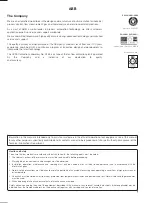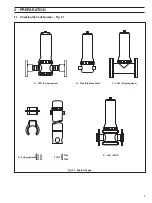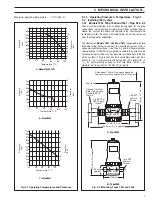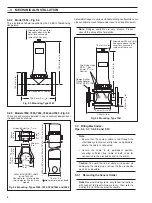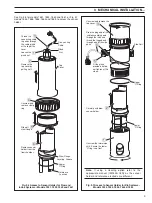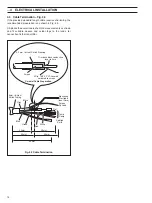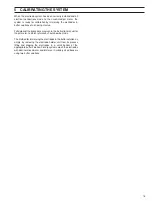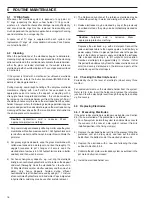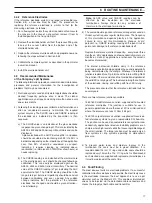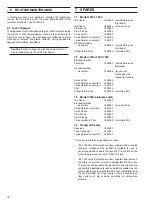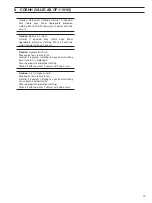
4
…2
PREPARATION
Fitted to all systems.
Fitted to all systems except when
model 1740 ( Redox - ORP ) is used or if
manual temperature compensation is used.
*
1750-000 Temperature Compensator
ASEA BROWN BOVERI
1740-000 Platinum Metal Electrode
ASEA BROWN BOVERI
1741-000 Antimony Metal Electrode
ASEA BROWN BOVERI
1721-000 & 1723-000 Cone-shaped Electrodes
ASEA BROWN BOVERI
1722-000 Low Resistance Electrode or
1724-000 High Temperature Electrode
ASEA BROWN BOVERI
1720-000 General Purpose Electrode
ASEA BROWN BOVERI
1730-000 Reference Electrode
*
ASEA BROWN BOVERI
2.2
Identifying the Electrode Type –
Fig. 2.2 and Table 2.1
A pH system is only as accurate as the electrodes used to make
the measurement. To satisfy a wide range of applications, and to
meet the demands of modern processes, the Company has
produced a range of electrodes to satisfy most requirements.
Reference Electrode (1730-000)
fitted to all systems
– used in
a sealed electrolyte or reservoir fed system, e.g. for applications
where the conductivity of the water is less than 30 µScm
-1.
General Purpose Electrode (1720-000)
– suitable for most
industrial applications. Operates from 0 to 14 pH, 0 to 100°C (32 to
212 °F) and must be used when the mechanical wiper is fitted.
Low Resistance Electrode (1722-000)
– low resistance
membrane electrode for low temperature, low conductivity
applications. For use in the water industry where the sample
temperature drops below 10°C (50°F). Operates from 0 to 10 pH,
0 to 70°C (32 to 158°F).
Note.
For conductivities less than 30 µS cm
-1
a
stainless steel system is recommended.
High Temperature Electrode (1724-000)
– for use on high
temperature samples only (i.e. above 50°C (122°F)). The
maximum operating temperature is 140°C (284°F).
Cone Shaped Electrode (1721-000)
– heavy duty electrode
designed specifically for ultrasonic cleaning. Operates from 0 to
14 pH, 0 to 100°C (32 to 212°F).
Low Temperature Cone Electrode (1723-000)
– designed for
use with ultrasonic cleaner and especially where the sample is at
low conductivity/low temperature. Operates from 0 to 10 pH, 0 to
70°C (32 to 158°F).
Platinum Electrode for Redox (ORP), (1740-000)
– platinum
electrode enables Redox (ORP) measurements to be made using
any of the electrode systems.
Antimony pH Electrode (1741-000)
– designed to work in
applications when hydrofluoric acid is present.
Temperature Compensator (1750-000)
– three-wire PT100
temperature compensator required to ensure high accuracy. It is
compatible with older generations of Company instruments as
well as the current models.
Note.
All of these electrodes are compatible with the
AX, 4500 and 4600 Series, 9140, 9170 and 9180
Series transmitters.
Fig. 2.2 Electrode Models


